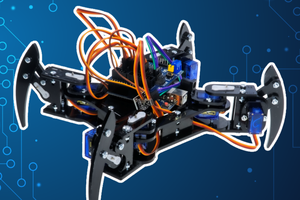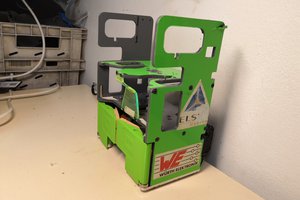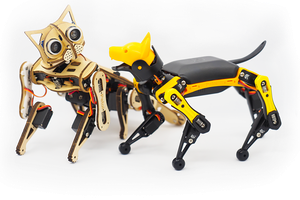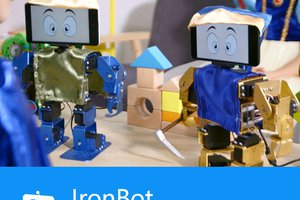Introduction
This tutorial will guide you through every step of the programming and setup process. The XGO Rider is a palm‑sized, two‑wheel self‑balancing robot that uses a BBC micro:bit as its brain. With just a few simple steps you can write your first program, upload it to the micro:bit and even drive the robot using your phone’s Bluetooth.
What You Need
- XGO Rider kit: The robot body, Rider adapter and rechargeable battery.
- BBC micro:bit: Version 1 or 2 will work.
- Micro USB cable: To connect the micro:bit to your computer for programming.
- Computer: For writing and uploading code.
- Smartphone: To use the XGO app for remote control.
Let's Set Up the XGO Rider !
Step 1 – Charge and Prepare
- Fully charge the XGO Rider battery: Use the included USB‑C cable; a full charge gives roughly two hours of runtime.
- Check the micro:bit: Plug the micro:bit into your computer and confirm it appears as a drive; leave it connected for programming.
- Place the robot on a safe surface: When powered on, the XGO Rider will rock slightly to find its balance. A flat, stable surface prevents falls or damage.
Step 2 – Install the MakeCode Extension
The easiest way to program the XGO Rider is using the Microsoft MakeCode editor.
- Create a new project: In MakeCode, click “New Project” and name it.
- Add the XGO Rider extension: Select Extensions, search for XGO‑Rider and install it. This adds special blocks for controlling the robot.
- Set serial communication: In your on start block, insert the “Set XGO‑Rider serial port” block and choose TX P14 and RX P13. These pins are the default communication channels between the micro:bit and the robot.
Step 3 – Write a Simple Program
Let’s make the robot perform an action when Button A is pressed:
- Display an icon: Inside the on start event, drag a “show icon” block (e.g., a heart) so the micro:bit displays a symbol when powered on.
- Set serial ports: Still inside on start, add the “Set XGO‑Rider serial port TX P14 RX P13” block.
- Program Button A: Add an “on button A pressed” block. Inside it, place “XGO‑Rider – Execute Action” and choose LiftRotation. This causes the robot to rise and rotate when you press Button A.
- Add a reset trigger (optional): Use “on loud sound” and insert a “Restore initial action” block. When you clap or tap near the micro:bit, the robot returns to its balanced posture.
Step 4 – Upload the Code
- Download the program: Click Download in MakeCode to create a .hex file.
- Copy to the micro:bit: Drag the .hex file onto the micro:bit drive. The micro:bit will automatically reset and run the new program.
- Detach the micro:bit: Unplug it from your computer once the transfer completes.
Step 5 – Assemble and Test
- Insert the micro:bit: Slide it into the slot on the Rider adapter; ensure the edge connector seats firmly.
- Turn on the XGO Rider: Flip the power switch. The robot may sway slightly as it stabilizes.
- Press Button A: The robot should perform the LiftRotation action. Try clapping to return it to its initial stance.
- Troubleshoot if needed: Verify the battery is charged, the serial pins are set correctly and the micro:bit is seated properly.
Step 6 – Remote Control via the XGO App
Want to drive the robot without coding? Use the XGO app to control it like an RC car.
- Install the app: On Android, download and install the latest XGO APK; on iOS, find “XGO” in the App Store.
- Prepare the robot: Place the XGO Rider on a flat surface and power it on. Enable Bluetooth on your phone.
- Connect: Open the app and tap the Bluetooth icon. Choose your XGO Rider from the list and accept any permission prompts.
- Drive: Once connected, tap the arrow to open the control panel. Use the on‑screen joystick and buttons to move forward, backward or turn.
Conclusion
Programming and setting up the XGO Rider is straightforward: install the MakeCode extension, write a simple program, upload it to the micro:bit and watch your robot...
Read more » Jithin Sanal
Jithin Sanal
 robotistan
robotistan
 Hippolyte
Hippolyte
 Petoi
Petoi
 tab
tab